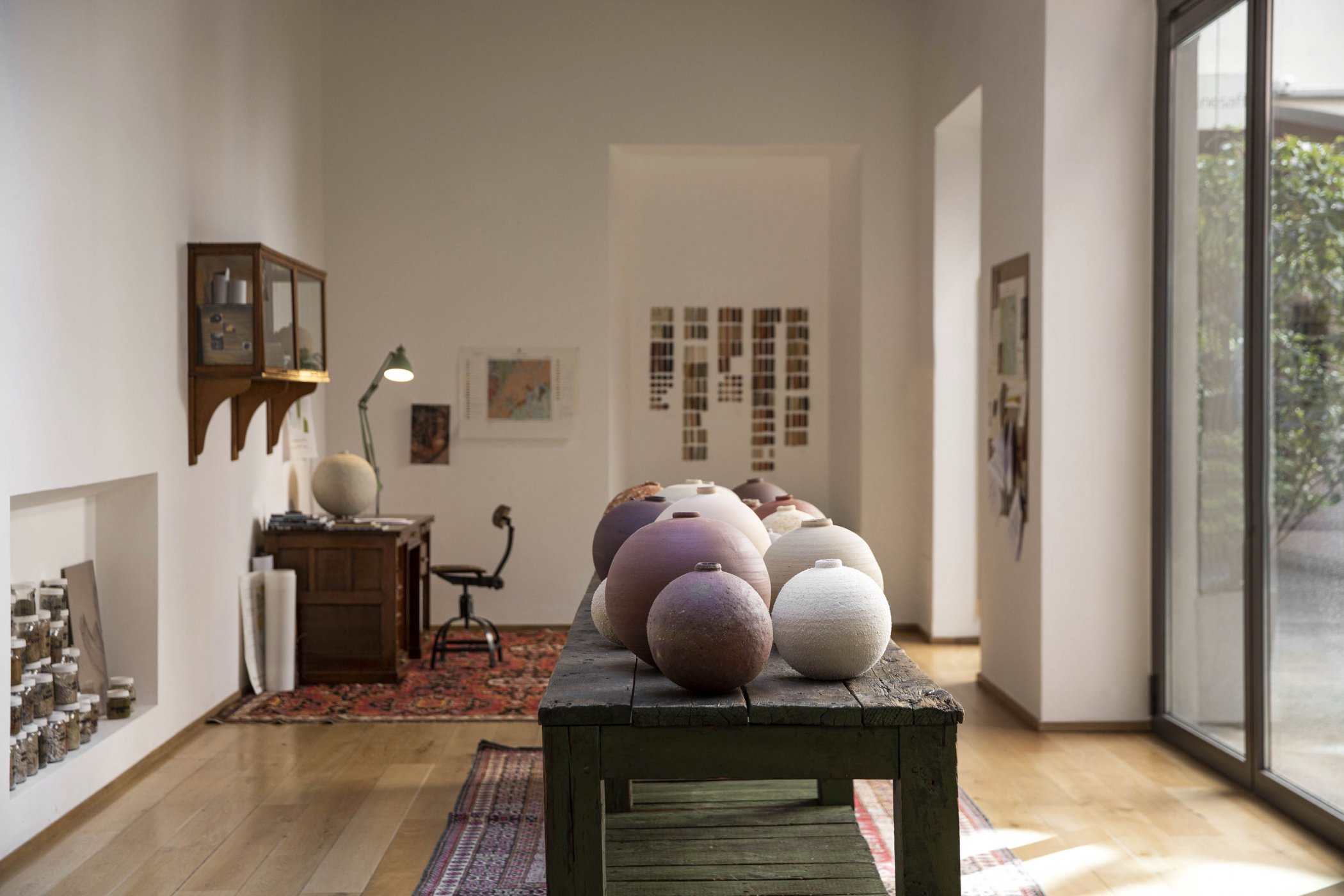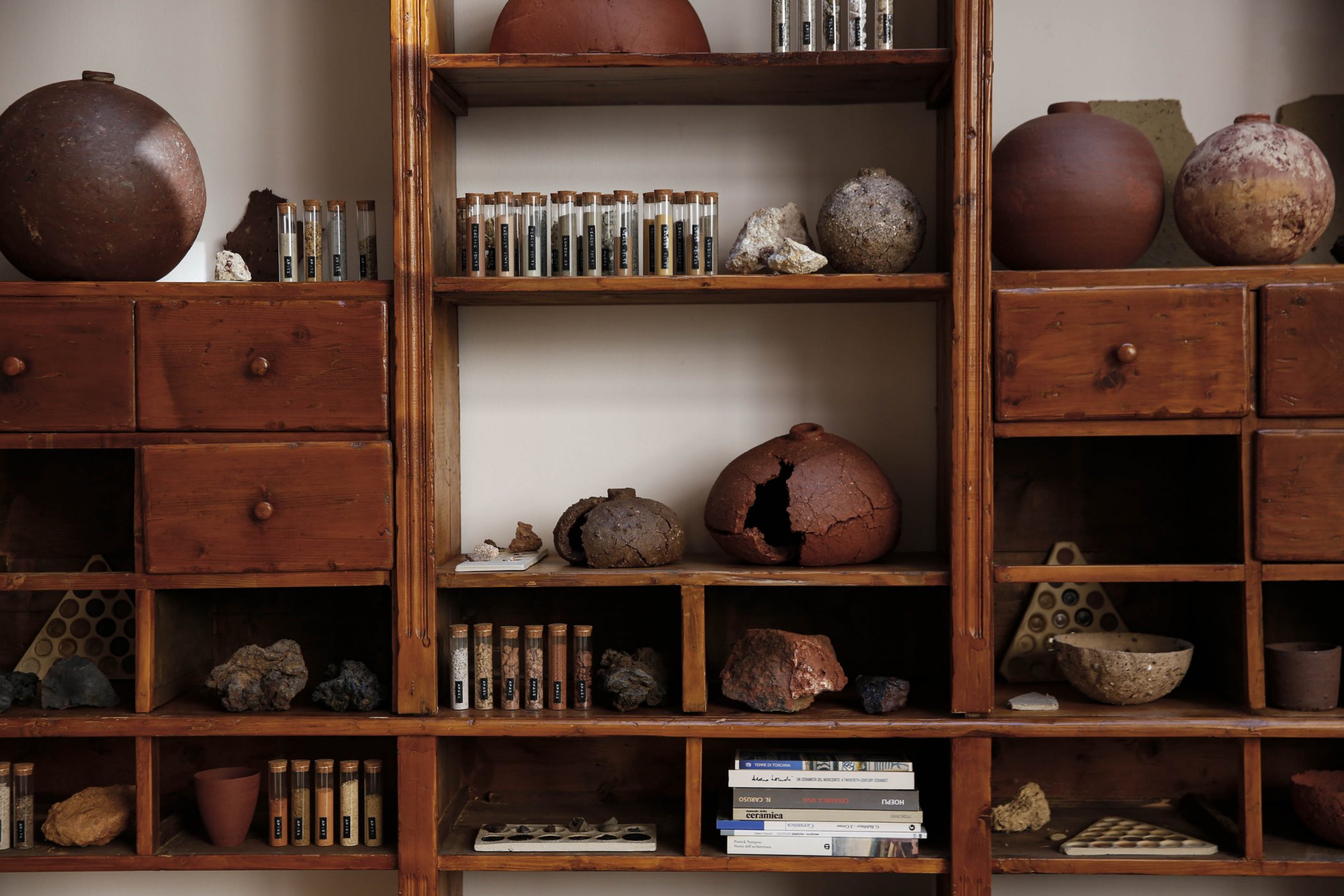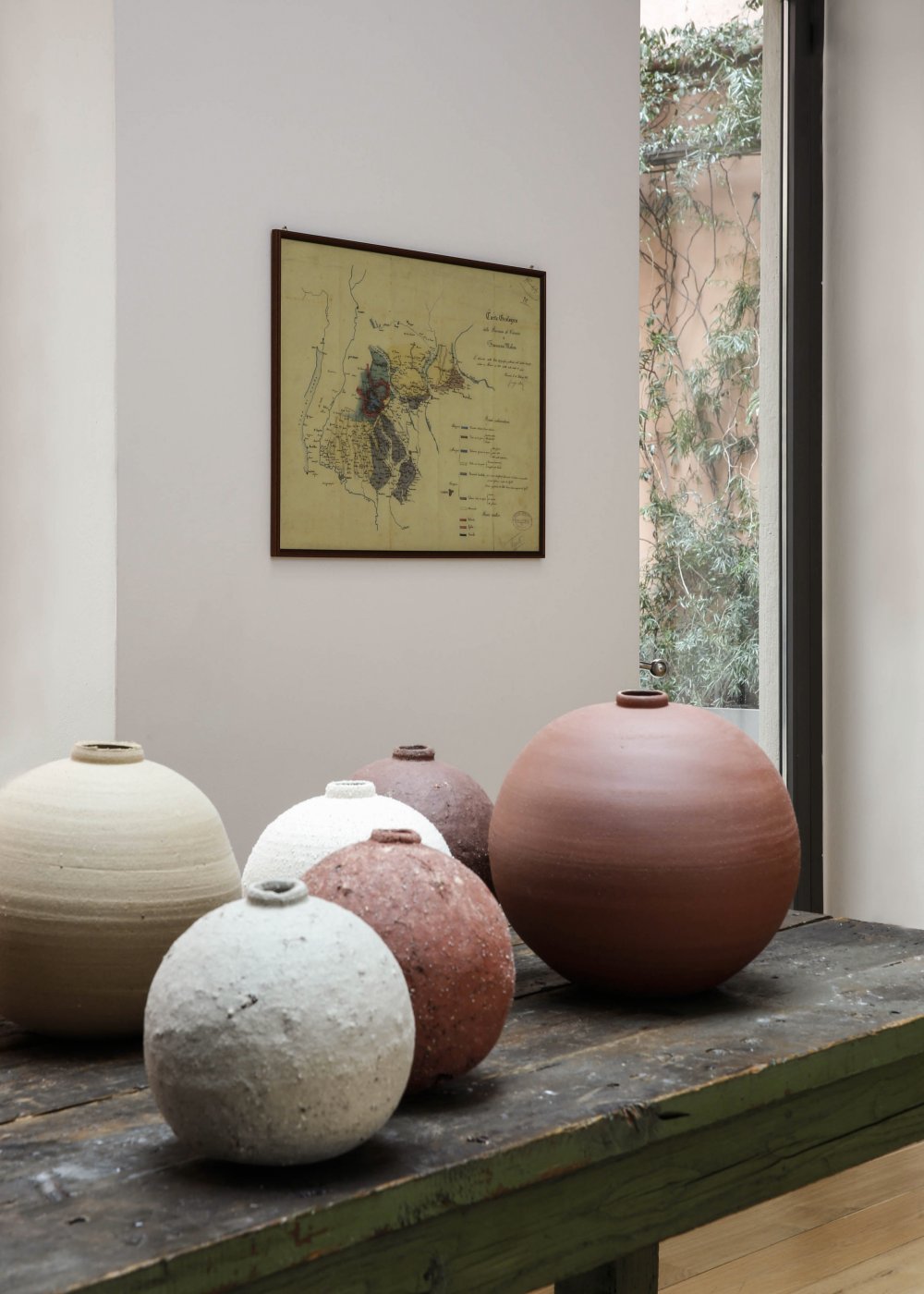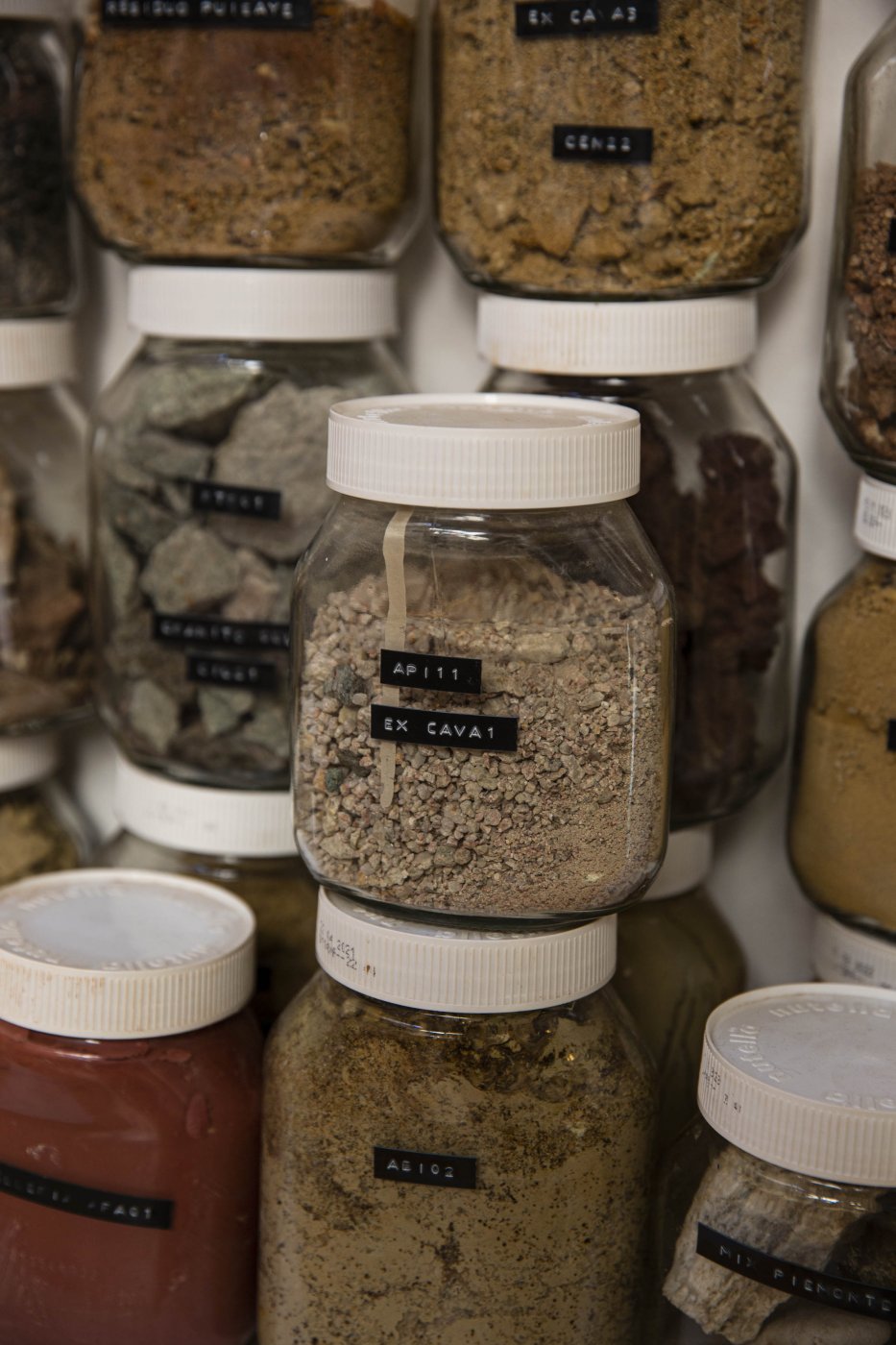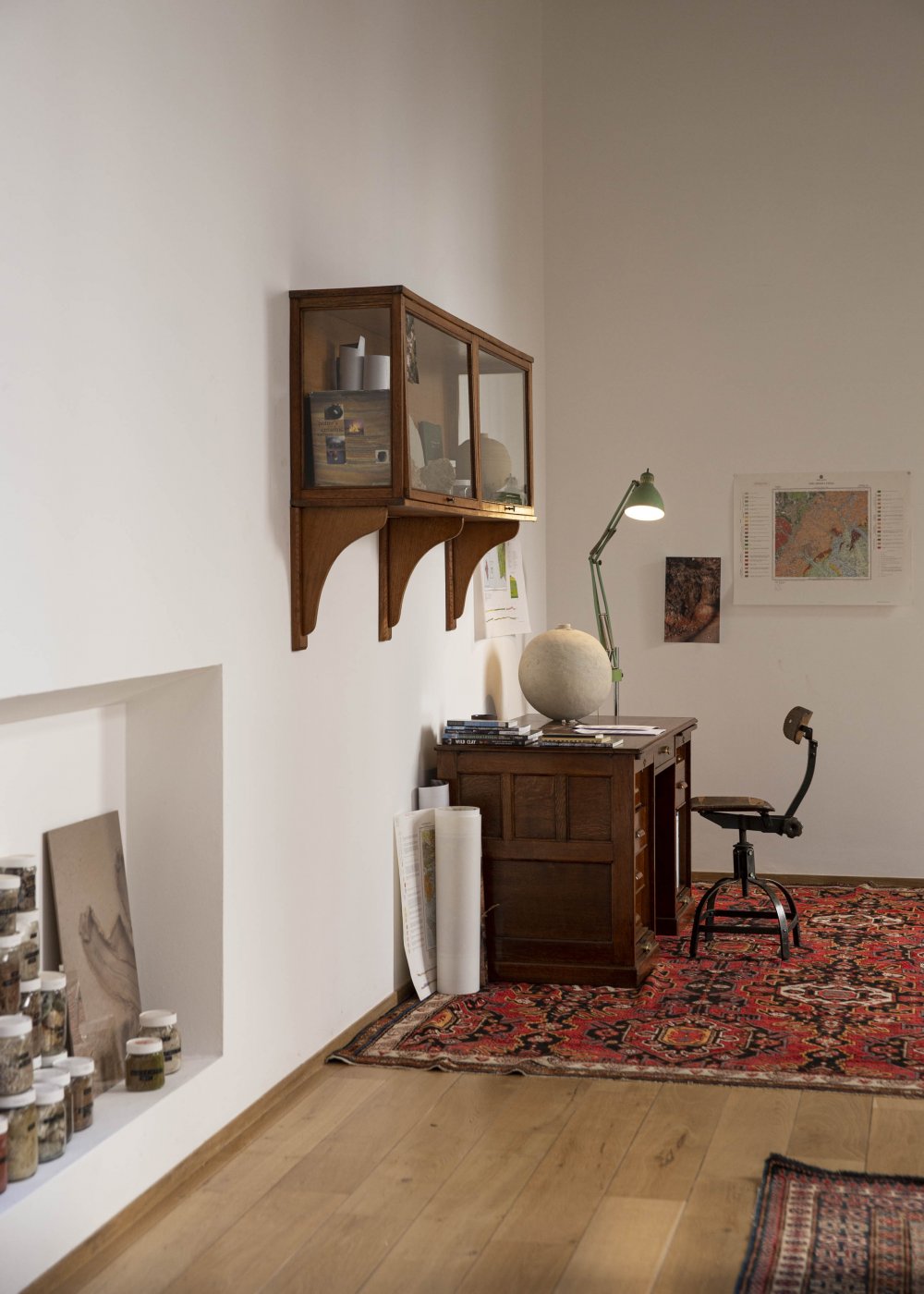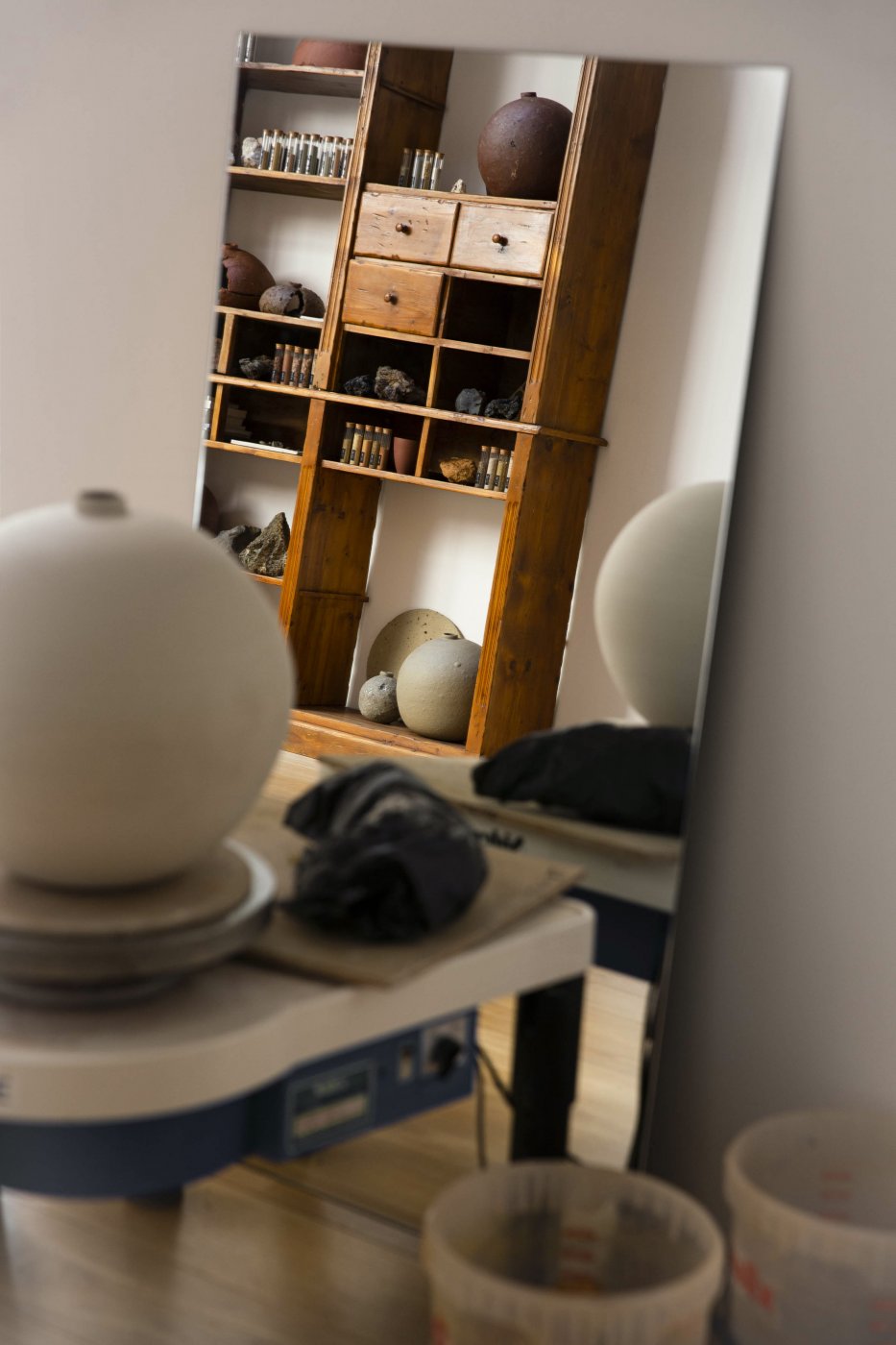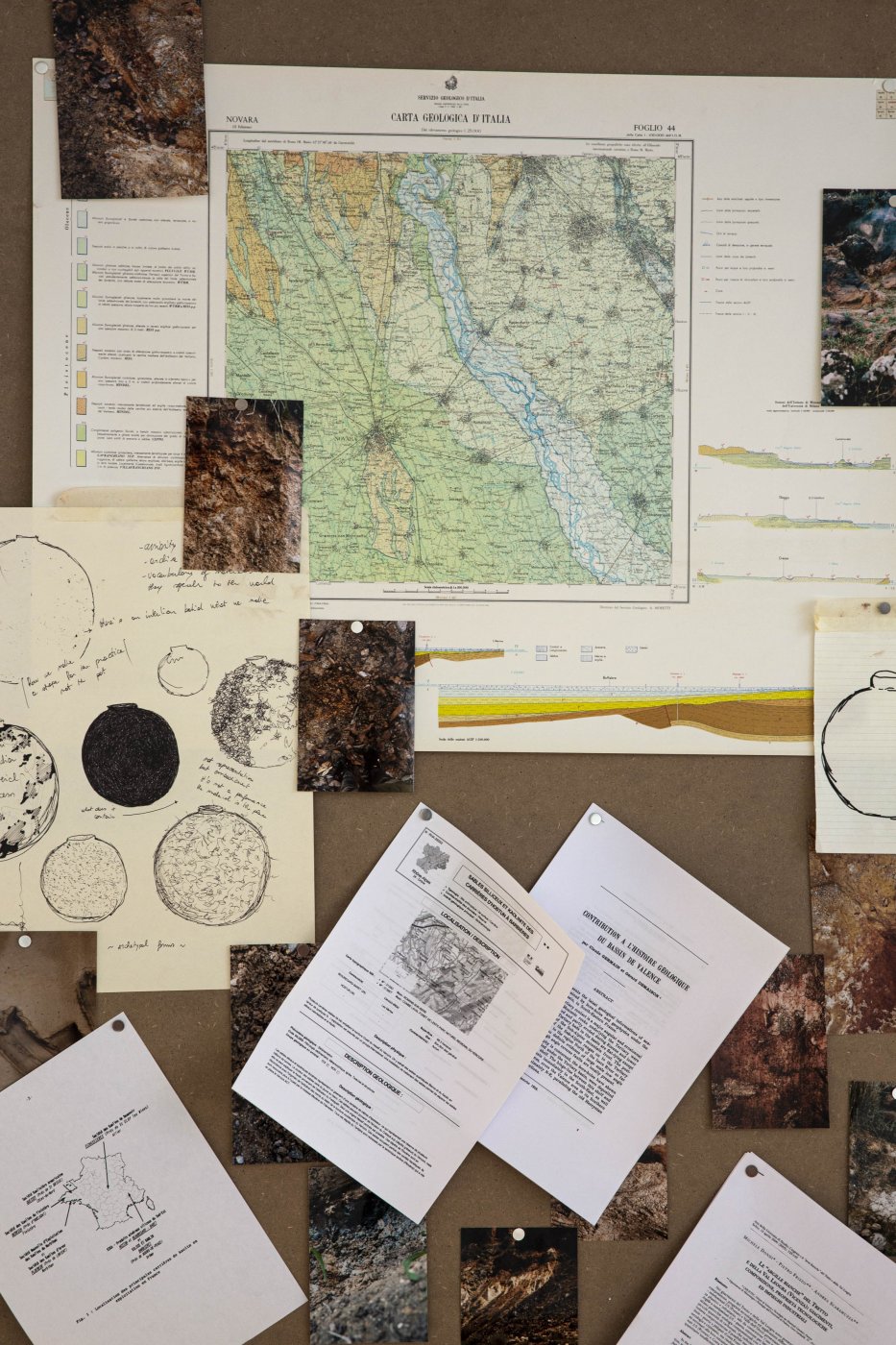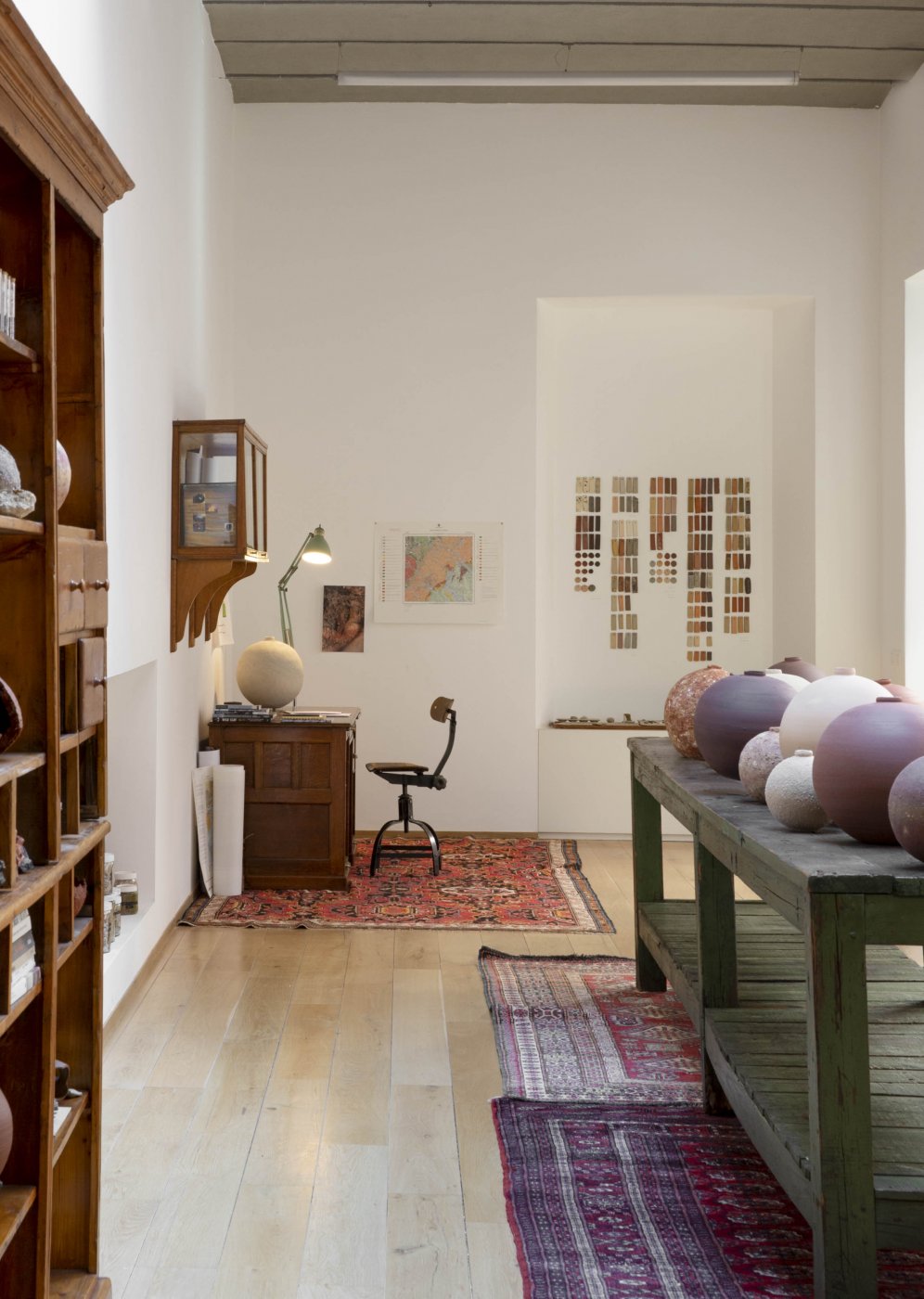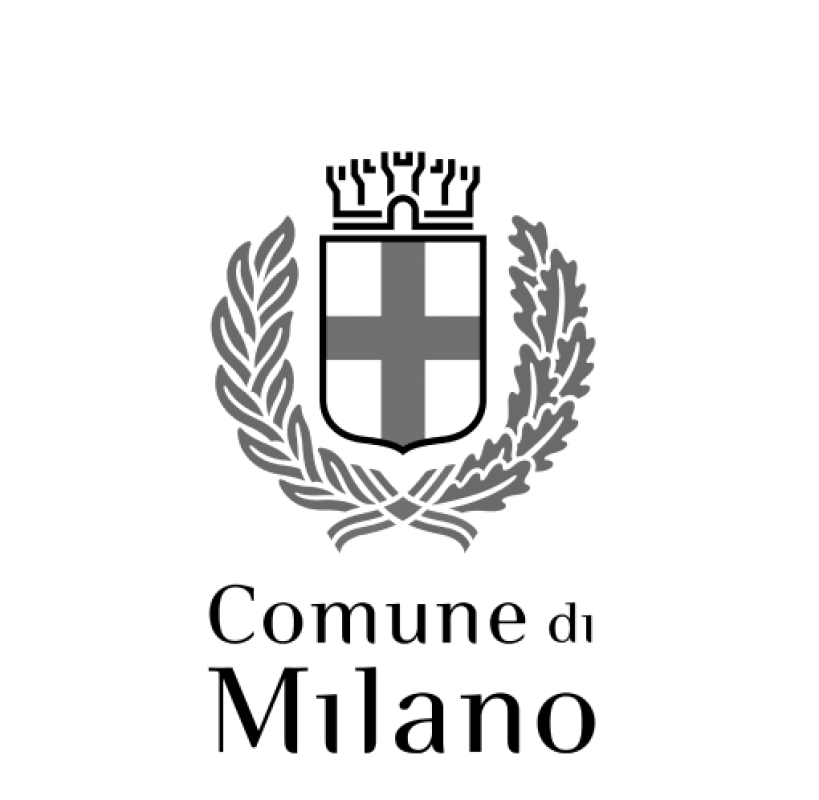Unurgent Argilla. Nina Salsotto Cassina
Opening hours:
Monday - Friday
9.30am - 1pm / 2pm - 6.30pm
Saturday
11am - 6pm
free admission
Monday - Friday
9.30am - 1pm / 2pm - 6.30pm
Saturday
11am - 6pm
free admission
Fondazione Officine Saffi is pleased to present Unurgent Argilla, solo exhibition featuring Nina Salsotto Cassina’s research project dedicated to the definition of a method of study and a formal vocabulary that can express the territory through the complex system of narratives stratified in its material structure.
The title of the exhibition – formed by juxtaposing the Italian word for clay, argilla, with an invented word reflecting the need to rethink the dimension of time, taking it beyond the rhythms imposed by systems of information and production – is directly linked to the concepts underpinning the launch of this research study in 2019. Shortly after starting experimentation on ceramic technique, during a period spent in her region of origin, the artist found herself re-discovering the area of the Maritime Alps, in a chance encounter with the clay from a natural deposit on Mount Bisalta found during a hike. That moment marked the start of a method of classification, and the construction of an archive, in which the study of the various soils’ physical properties is combined with the awareness that they play an active role in a complex ecosystem in which the territory is both the subject and object of a process of knowledge interlinking stories, places and people.The series of pots presented at this exhibition are the outcome of a process of research, sourcing, analysis and mapping of different soil samples collected by the artist from more than thirteen natural clay deposits in Italy and France. The exhibition also presents a selection of bibliographical contributions, scientific texts and geographical maps, in addition to a collection of materials and working tools with the aim of revealing the process attitude of the artist’s practice, and the study dimension from which her work is developed.
Therefore, if samples of clay taken from the same area respond differently to the ceramic procedures performed on them, the artist selects just some of them, expressing their uniqueness of narrative through the process of modelling her spherically shaped pots.The repetition of this form allows the material’s individual characteristics to emerge and tell their own story, while also placing the work of the artist-artisan in the stream of a tradition coming every day to a new life through an infinity of small gestures. In this way, the material is put into direct relation with the means of production, within the context of its cultural and territorial background. Rather than limiting the range of possibilities, the rediscovery of this localised dimension of experience reaffirms, in our contemporary world, the ethical values of the alchemical approach that has always nurtured the ceramic process, underpinning the conviction that there is always something more to be discovered.
Nina Salsotto Cassina (b. 1989, Cuneo) was born and grew up in Piedmont, near the Maritime Alps. After studying economics in Milan and then moving to London to specialise in international politics, she began her career working as a consultant for a number of tertiary sector organisations, operating in the United States, Europe and China. From her home base in London, she began to develop an interest in clay and ceramics, eventually founding Unurgent Argilla, a project combining research and art practices with the objective of constructing a vocabulary of natural materials. Self-taught, she mainly works on the lathe. Her works have been published in ceramic reviews and exhibited in various European galleries and museums. In 2022, she moved permanently to Milan, where she dedicates all her time to research.
The title of the exhibition – formed by juxtaposing the Italian word for clay, argilla, with an invented word reflecting the need to rethink the dimension of time, taking it beyond the rhythms imposed by systems of information and production – is directly linked to the concepts underpinning the launch of this research study in 2019. Shortly after starting experimentation on ceramic technique, during a period spent in her region of origin, the artist found herself re-discovering the area of the Maritime Alps, in a chance encounter with the clay from a natural deposit on Mount Bisalta found during a hike. That moment marked the start of a method of classification, and the construction of an archive, in which the study of the various soils’ physical properties is combined with the awareness that they play an active role in a complex ecosystem in which the territory is both the subject and object of a process of knowledge interlinking stories, places and people.The series of pots presented at this exhibition are the outcome of a process of research, sourcing, analysis and mapping of different soil samples collected by the artist from more than thirteen natural clay deposits in Italy and France. The exhibition also presents a selection of bibliographical contributions, scientific texts and geographical maps, in addition to a collection of materials and working tools with the aim of revealing the process attitude of the artist’s practice, and the study dimension from which her work is developed.
Each of the collected samples is examined by means of the analysis of its chemical and mineralogical composition. The stratification of geological information revealed in this phase is completed by means of a series of tests requiring considerable time, enabling the expression of a previously unknow mapping and territory narrative within the dimension of the ceramic practice.
Therefore, if samples of clay taken from the same area respond differently to the ceramic procedures performed on them, the artist selects just some of them, expressing their uniqueness of narrative through the process of modelling her spherically shaped pots.The repetition of this form allows the material’s individual characteristics to emerge and tell their own story, while also placing the work of the artist-artisan in the stream of a tradition coming every day to a new life through an infinity of small gestures. In this way, the material is put into direct relation with the means of production, within the context of its cultural and territorial background. Rather than limiting the range of possibilities, the rediscovery of this localised dimension of experience reaffirms, in our contemporary world, the ethical values of the alchemical approach that has always nurtured the ceramic process, underpinning the conviction that there is always something more to be discovered.
Nina Salsotto Cassina (b. 1989, Cuneo) was born and grew up in Piedmont, near the Maritime Alps. After studying economics in Milan and then moving to London to specialise in international politics, she began her career working as a consultant for a number of tertiary sector organisations, operating in the United States, Europe and China. From her home base in London, she began to develop an interest in clay and ceramics, eventually founding Unurgent Argilla, a project combining research and art practices with the objective of constructing a vocabulary of natural materials. Self-taught, she mainly works on the lathe. Her works have been published in ceramic reviews and exhibited in various European galleries and museums. In 2022, she moved permanently to Milan, where she dedicates all her time to research.

